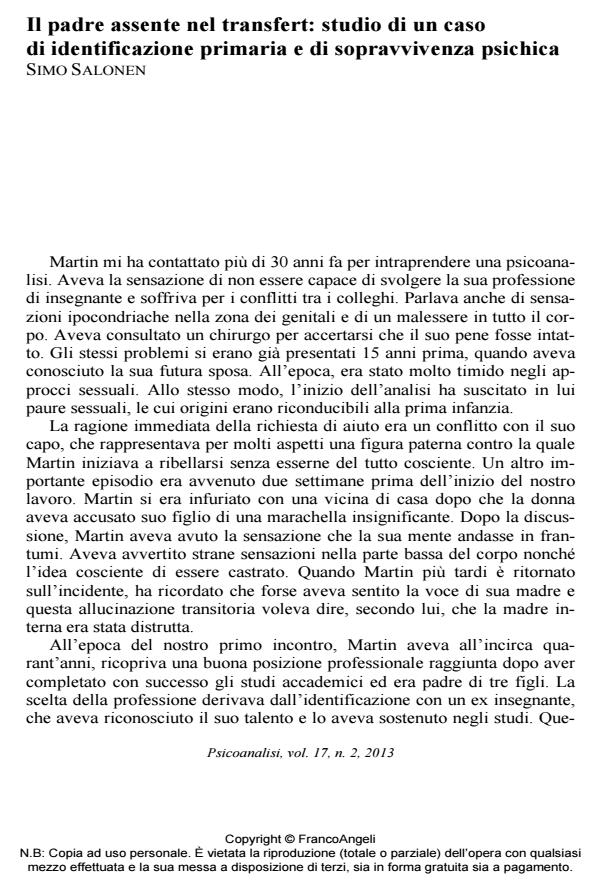The absent father in the transference: a case study of primary identification and psychic survival
Journal title PSICOANALISI
Author/s Simo Salonen
Publishing Year 2014 Issue 2013/2
Language Italian Pages 19 P. 5-23 File size 273 KB
DOI 10.3280/PSI2013-002001
DOI is like a bar code for intellectual property: to have more infomation
click here
Below, you can see the article first page
If you want to buy this article in PDF format, you can do it, following the instructions to buy download credits

FrancoAngeli is member of Publishers International Linking Association, Inc (PILA), a not-for-profit association which run the CrossRef service enabling links to and from online scholarly content.
Using a case study of early psychic trauma as his starting point, the author analyses the significance of the father in the constitution of the human mind. Representing reality beyond the early fusion with the mother, the father as an absent "other" signifies a threat to the child, which is re-actualized in the primal scene. However, the traumatic locus is not the perception of the parents’ sexual relationship per se, but the infant’s premature confrontation with the instinctual drive within its own body. The discovery of the father as a human being signifies a primary identification. It outlines an elementary frame of reference for the psy-chic representation of archaic drive phenomena, and contributes to the emerging ego ideal. In representing the principle of primary identification, the psychoanalytic setting gives room for metaphorical dealing with archaic drive phenomena, and makes the solution of intrapsy-chic conflicts possible in the transference.
Keywords: Father, primal scene, primary identification, psychic representation, psychic survival
Simo Salonen, Il padre assente nel transfert: studio di un caso di identificazione primaria e di sopravvivenza psichica in "PSICOANALISI" 2/2013, pp 5-23, DOI: 10.3280/PSI2013-002001